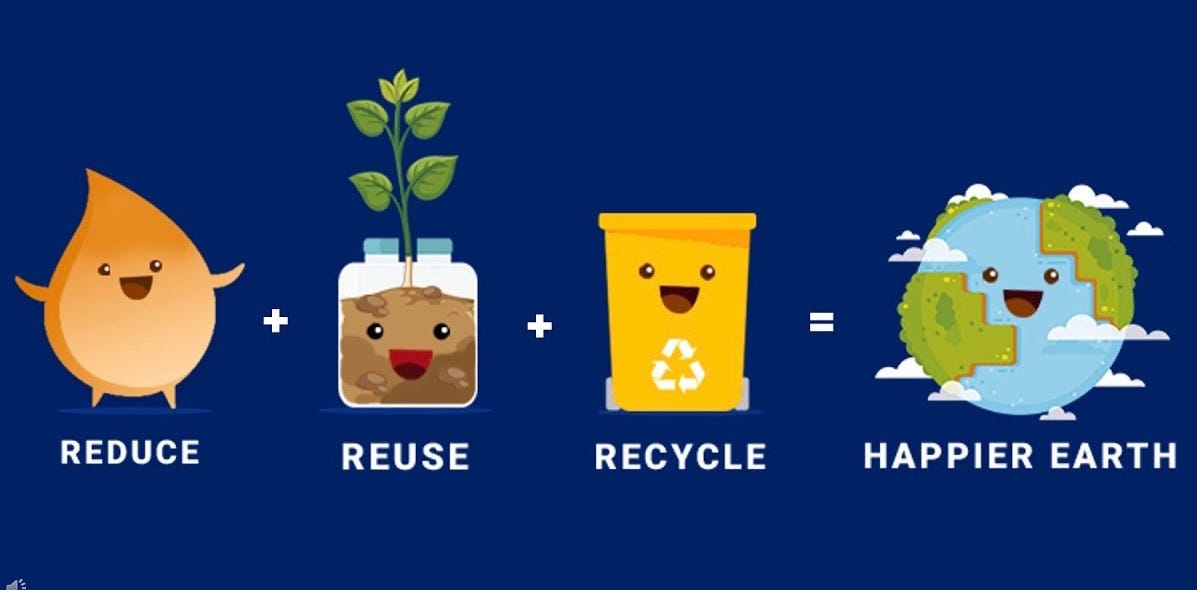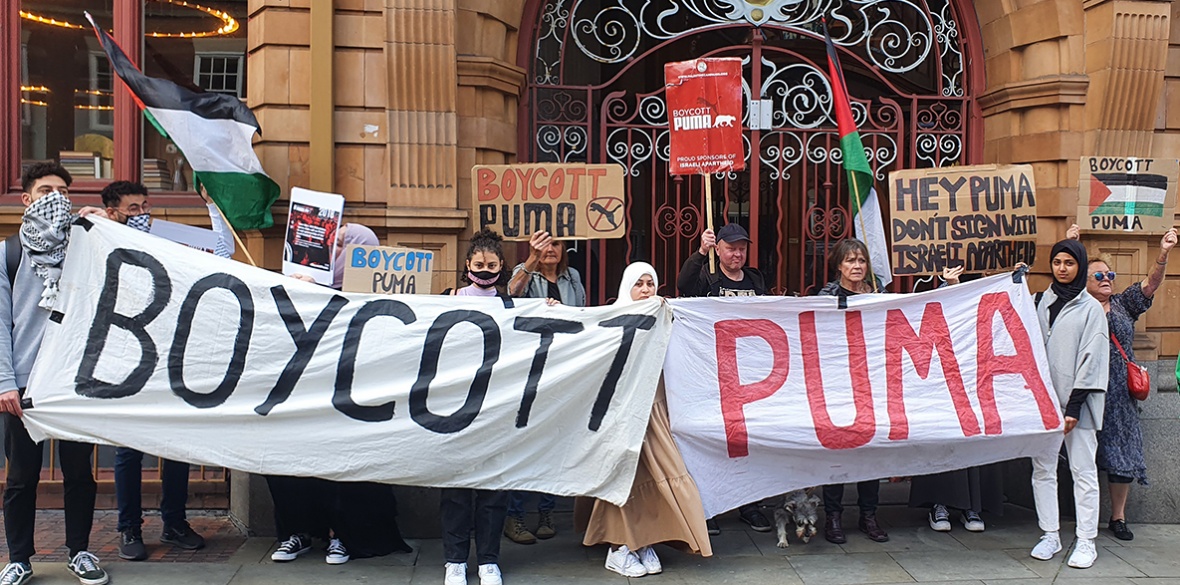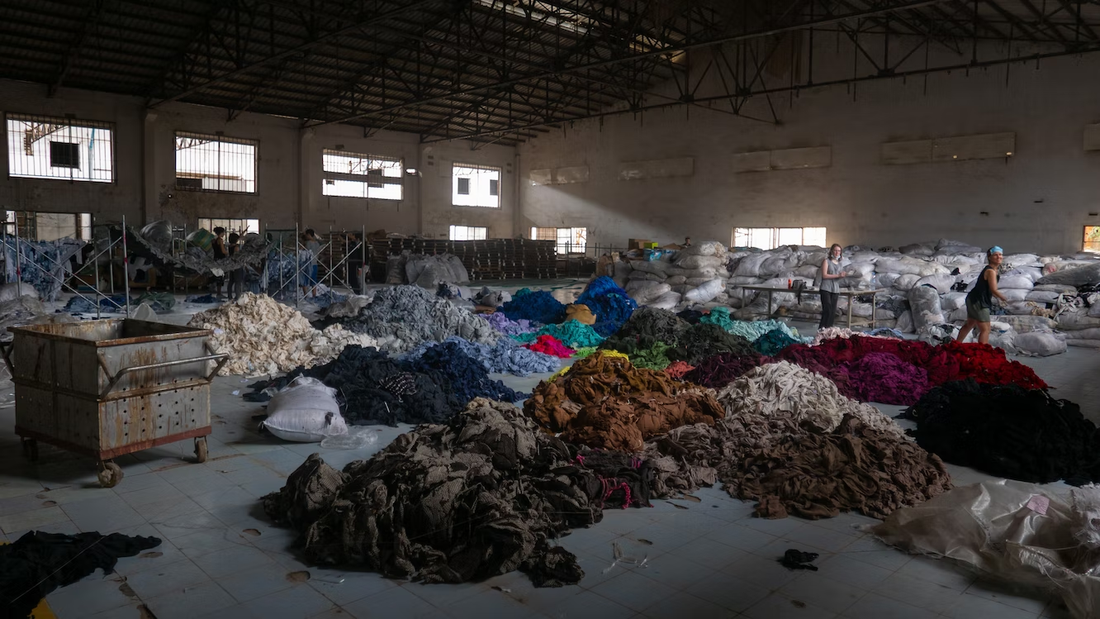In a world where practically all of us feel more and more distanced from the levers of power and change, it's been a comforting mantra from our consumer industries that buying product 'x' can help save the world. If you've seen THTC advertising, you'll know we use that same language - the only difference being that we know what we're saying is true. We've said before on this blog that 'consumerism' isn't going to save the world - but can the idea of sustainable fashion or sustainable brands make a difference? And how can you, dear reader, help?

What is sustainable fashion?
Recently, we've come across many essays and articles from the fashion and trades community that deal with terms like 'ethical' and 'sustainable' fashion as very different modalities and definitions. The words themselves are used interchangeably but always to discuss issues of social impact and environmentalism. However, they deal with different - yet interlinked - areas of concern.

The overall goal of ethical or sustainable fashion is ultimately to ensure that companies can neither make products that damage the world nor exploit individuals. Similarly, this would mean that the same companies shouldn't create 'eco products' that use exploited labour.
THTC - an ethical clothing company - but are we sustainable?
THTC has worked hard to be an ethical clothing brand, ensuring we implement worker protections and welfare at all stages of the production of our garments. We put humans - our garment workers and our hemp fabric farmers - as our central concern. As such, 'ethical fashion is a tool for critiquing how every process in the supply chain impacts real human beings - especially working conditions.

97% of garment manufacturing is outsourced to countries in the Global South. Women make up 85% of this workforce. As a result, most labour in the fashion industry comes from poor and marginalised women. Poorer countries with bad human rights records - Honduras, India, Pakistan, Bangladesh - have become centres of the fashion industry production and the source of vast profits. We've written about how Gap and H&M have their hands dirty in this respect - earning billions from what is essentially slave labour.
In working with locally-owned factories and unionised workforces, THTC and many other sustainable clothing brands are setting an example of better ways of engaging with the people who make our products. We feel that fair wages and fair trade are fair demands.

However, the responsibility of being an ethical business doesn't end there. It's not just bad pay and conditions that harm workers - but also unchecked and unregulated pollution. Wouldn't you know it - in the same countries where it's easy to exploit poor people, it's also relatively easy for foreign companies to incentivise widespread pollution. Examples like Indonesia's Citarum River, which has famously become a dumping ground for the region's textile sector, are a reminder of the 'cost of development. Although if the price of development is widespread skin disease, increased risk of cancer, and over 60% of local children suffering skin infections - maybe it's not the progress we need.
Sustainability - a focus on the environment
Sustainability in the context of fashion focuses on the environmental side of things. Similar to 'ethical fashion', sustainability focuses on the environmental impact of each production stage - from the emissions, the so-called 'carbon footprint', and how the product is consumed. 'Sustainability' ethos looks to work on both industrial practices and change how people use their products.

As we've said in previous blogs, the agricultural sector's current practices that feed textiles are horrifically water and energy intensive, relying on tonnes of pesticides and other inputs. These have caused documented congenital disabilities in the cotton-growing and processing areas of both North and South Punjab. 'Fast fashion has created a cycle of consumption that sees over 11.2 million tons of textiles sent to landfills every year. And remember how much water a conventional cotton t-shirt requires in its production? As much as four average UK households use in a day! So many high street brands collectively have a massive negative environmental impact.
The fashion sector as a whole contributes massively to climate change. Many misrepresent themselves as eco-friendly while selling harmful clothing lines, for example, made with highly toxic dyes.
Ideally, you want a company that pledges to use natural materials, use less water, and safeguard biodiversity in its operations while making high-quality clothing.
THTC uses hemp and organic cotton in our clothing. We're also phasing out all plastics from our clothing - including Recycled PET, which has often been falsely marketed as a 'green' material (rPET generates more microplastics than virgin plastic). We also encourage the adoption of circular economies - that is, closed-loop production and consumption - as well as the Three Rs - Repair, Reuse, Recycle. We're not the only ones doing this, of course. There are other sustainable fashion brands out there - Patagonia being one of the ones we love.
Sustainability & Ethical Fashion - Handshake Emoji Meme
What good is organic hemp or organic cotton if it was harvested and processed with exploited labour? And what use is a 'decent wage' if that garment worker's home and waterways have been destroyed by the industry they work in? We need to work on both ethical production and sustainability at the same time.
Economics and business make a difference. Our last blog on cotton detailed how the modern fashion industry was essentially built upon the bones of American cotton slavery and the exploitation and looting of cotton mills in British-Occupied India. The desire for vast wealth and capital growth, along with Britain's protectionist trade policies, drove the demand for slave labour. It was an economy owned and operated by a very privileged few - namely, the directors of the East India Company and owners of the massive slave plantations.
When a company operates in the interests of private wealth, the 'bottom line' will always win out. For brands to be truly sustainable - they need to be owned and operated in the interests of their workers and their community.
In our opinion, the one thing that the current discourse on sustainable and ethical fashion has been missing of late is the discussion of collective and cooperative ownership.
How You Can Support Sustainable Fashion
1) Support Collective Ownership
Supporting businesses owned by their workers is the first way to ensure a sustainable clothing sector. Great examples of fashion co-ops are:
- Blue Tin Production Co-Op - a Chicago-based clothing co-op that employs refugees and women from marginalised communities;
- Stitched Up - A UK-based textiles Co-operative
- Opportunity Threads - a US-based worker-owned textiles coop
- Community Clothing - UK-based textiles cooperative

2) Follow the 4 Rs! - (Reduce) Repair, Reuse, Recycle
- Reduce - Stop buying shit you don't need in the first place. Avoid buying new clothes - purchase second-hand.
- Repair - You can repair most clothes by yourself or by popping into your local Timpsons (if you're in the UK). Timpsons is a fantastic company that gives young people with former convictions a second chance and pays their employees living wages.
- Reuse - You can repurpose that old skirt or t-shirt. The only limit is your imagination.
- Recycle - Or Upcycle. Those threads can be recovered and turned into something new. Most responsible clothing brands have a clothing collection and recycling service.

3) Cyberbullying
Getting on your favourite social network to call out exploitative practices is exceptionally good and responsible. H&M, MissGuided, ASOS - they're all at it, and despite what they might say in the papers, they're STILL exploiting workers abroad and at home. Call that greenwashing shit out and hound them.
4) Always read the label, and buy with intention.
You should know precisely what you're buying and why you're buying it. Retail therapy is a bullshit myth. Stop buying shit you don't need. Buy mindfully, understanding your needs, the quality of your product, and what it's made from. Be fully educated on how long your product will last you.
You can always trust a THTC label - that doesn't mean you shouldn't question us!
Can Sustainable Fashion make a difference?
Yes. However, we have to take up arms and fight for it. Caring and taking an interest in the welfare of the people that make the things you use is the first step. Nearly everyone reading this has at least a kernel of empathy within themselves. That's the heart of what it means to be a sustainable and ethical business.
The biggest misdirect of the past generation is the concept of 'voting with your wallet. Most of the world's production and supply chains are inextricably tied up with criminal, unethical or ecocidal activities. We, as consumers, have no control over that. The idea of 'hitting them in the pockets is a good one. But it cannot be achieved by 'not buying from a brand that has a presence in every viewable inch of every UK high street.
If such a thing were true, McDonald's would have collapsed after the McLibel Scandal. Nearly any multinational can throw marketing and PR money at a problem to make it disappear. Suppose you want to hit them where it hurts. In that case, direct action practised by Palestine Action against companies like Puma who use exploited Palestinian labour in the Occupied Territories is what you need to go for - occupying and closing down shops. By preventing the sale of exploitative goods and making a big scene, you create a substantial financial risk for that company. The problem right now is that it's too profitable to be unsustainable.

The key to ensuring that sustainable fashion can make a difference is keeping a vision of an equal future in your heart and mind - and being willing to fight for it.


